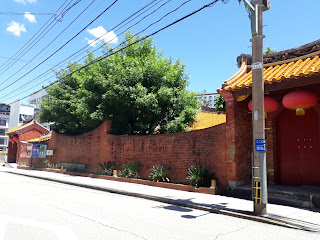This is a film came out in 1987, roughly based on Brett Easton Ellis's novel under the same title. Novel version review: http://blogfsphere.blogspot.com/2012/04/whats-point.html?m=0
The characters are the same. They are all spoiled kids from wealthy family trying to fit in the superficial circle of so-called friends. You can still see the main storyline is the same, but what's different is the experience. It is about the main characters' relationships, and the snapshot of the time and era. The sound track takes you back to the 80s.
In short, the film makes you cry while the novel leaves you helpless and empty.
You might complain that film didn't do justice.
And you're absolutely right.
It's a Film - so there had to be a drama.
The movie starts with the high school graduation scene where 3 main characters, Clay, Julian and Blair holding shoulders, and happily posing for camera.
Robert Downey Jr perfectly portrayed Julian, the immature, troubled kid from wealthy family who "used to be" the main character's best friend. Obviously he still was Clay's best mate when they graduated together.
But then the main character Clay decided to study at a collage out of town, leaving Julian and Blair (Clay's ex-girlfriend who later became a model).
Both Blair and Julian seem to share the abandonment issue with the family already, but when Clay left, they also felt abandoned by him, as Blair infers at the Christmas party at the club. A flashback shows when Clay caught Blair in bed with Julian when he briefly came back in town.
Blair begs forgiveness for herself, and Julian, implying how her having sex with Julian was, kind of, a way to fill the gap left behind by Clay, that they needed each other at that time.
Well, forget it. It doesn't matter anymore, Clay replies, but it is obvious that he hasn't forgiven his friend, and there stll is the strong sexual chemistry between him and his ex-girlfriend. Flirtation grew more and more bold and open when fuelled with cocaine and alcohol.
Half way through the film you start to feel just how out of control the whole scene is. Clay is a college student, and he observes "Others" in a dettached view.
Yes. In the film, Clay is the one who don't merge with anyone.
The shared habits of the in-crowd is exemplified by the frequent snorting scenes.
Clay's look of condescendence, and reluctance is so clear that you can tell he's only tolerating his ex-schoolmates, including his old friend Julian. He's only really engaging in conversation with Blair.
He looks annoyed everytime she mentions Julian's name.
Blair tells him,
- Julian is in trouble.
- Which trouble?
Julian is in deep shit all the time, debt, drug dependence and family issues.
Blair can defend him as much as she likes, like, - he's trying so hard to get off drugs.
But, that's not true, and Blair knows it, everyone knows it. And she herherself snorts more than enough.
Blair declares,
- I can quit any time.
- Really?
- Yeah
- That's impressive.
Clay still cares for Blair. He's not being sarcastic, he's just doesn't want to hurt her by being harsh. After all, she also is a troubled, immature girl trying to act cool and glamourous.
Julian is gullible, vulnerable and sometimes sweet in his awkward way. Clay looks he's had enough of him but
Julian seems to be more attached to him, clinging to the happy memories from the old days. And he hasn't moved on from that time, he's just a boy who can't do anything right on his own.
Young James Spader was superb as a sinister ex-schoolmate, now a drug dealer who sweet-talks Julian into buying more cocaine if he tries to kick the habit, then coldly demands to clear the debt he owes him and acts as a pimp who forces him to prostitute to pay it off.
Julian has no family or other friends to turn to for help, and like in the book it was already too late to save him when Clay eventually, reluctantly did so, and as 3 of them was driving out of town to escape, Julian died in the back seat of the car.
In the novel Clay gave him money to pay off the debt he owed Rip. Although he was no longer certain about their friendship, Julian was still special to him, thus he couldn't entirely cut him off, as it seemed. However, that was until Clay finally realised there was nothing left he could do to save his old friend.
In the end, he left the town leaving his past behind.
So, which one did I like better?
Well, personally I couldn't decide.
The movie and the novel were two different things.
I loved the book,
I loved the film.















































